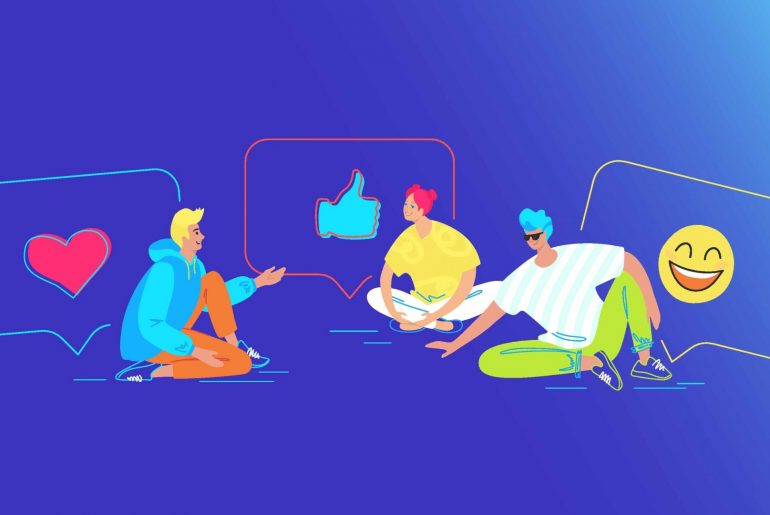These five simple rules can help you bring your content to the widest audience possible.
Everyone on the internet wants to go viral. In this column, I explain exactly how I’ve done this in four markets over 15 years. I define “going viral” as creating content that cumulatively gets more than a million views in a month or a single piece of content that gets over a million views in a year. Here are my four projects that qualify:
- Borg War. While I am primarily a journalist, I am an animation hobbyist. In 2006, using a technique called machinima, I created the feature-length Star Trek fan film “Borg War.” (BusinessWeek said it was “better than Star Trek: Nemesis.”) Borg War has gotten more than four million downloads and streams. (You can still find it on YouTube.)
- Sales Machine. In 2007, I started writing the blog “Sales Machine” for CBSNews.com, a site targeted at the general business audience. Sales Machine covered sales, politics, marketing, corporate culture, etc., with the line employee in mind. By 2010, it was earning about a million views a month.
- Sales Source. In 2011, I started writing the column you’re reading right now, which is, of course, on Inc.com, a site targeted at entrepreneurs and managers. Until the pandemic (and an injury that cost me the use of my right hand), Sales Source was often achieved over a million views a month. In Oct. 2019, it hit 1.9 million views.
- [TikTok Project]. I will write about this project in detail soon, but for now I’m keeping it under wraps. (Trust me, it’s worth some wait.) Suffice it to say that, despite an audience about which I knew nothing and a platform about which I knew nothing, within two months my TikTok project got three million views in one month.
What I’ve learned through experience is that there are five essential rules if you want your content to go viral:
1. Learn how your audience thinks.
This should go without saying, but 99 percent of the marketing content that comes out of the business world is “inside looking out.” It starts with “we’ve got this thing we to sell” so let’s figure out how to persuade people to buy it. This is especially true inside small firms with a “build a better mouse trap” sensibility.
Appealing to a wide audience means knowing what motivates that audience, how they feel, and what interests them, and only then considering how to communicate with them. Hint: If you have to force your audience to watch your content (for example, YouTube ads) to get to the content they really want, you’ve failed utterly.
With Borg War, for example, I worked with a team of four friends–avid Star Trek fans–who reviewed the “dailies” and provided me advice and ideas, while keeping me on target so that I was providing the right kind of “fan service.”
2. Create something original and relevant.
Based upon what you learned about your target audience, create something that they haven’t seen before. Since everyone lives in constant information overload, only something new and different cuts through the noise.
With Sales Source, for example, I have frequently called “bullsh*t” on the shibboleths of the modern workplace, like the open-plan office, and the insanity that is PowerPoint. Most online business writers were kowtowing to these sacred cows. By telling the hard truths, I acquired readers tired of the same old, same old.
3. Focus exclusively on content quality.
A lot of people on social media think that it’s a numbers game, that the more content you post the more likely it is that something will go viral. Sometimes that happens, but unless you’re already creating quality work, and can continue to do so after some of it goes viral, going viral is just your 15 minutes of fame.
I agonize over my content. I do a lot of rewriting and reworking. I would much rather have one solid interesting piece of content than 10 that are just so-so. When I’m working in animation, for example, I will often watch a clip or episode 30 times, re-editing until I’m not just satisfied, but utterly certain it’s my best work.
4. Interact with every commenter.
Going viral and staying viral is all about building a community, which means having ongoing conversations with your audience. Never let a comment go on answered. If it’s praise, thank them. If it’s critical, argue with them. If they’re trolls, make fools of them.
Staying atop your comments can be a burden, but it’s absolutely crucial to going viral and maintaining virality. With Borg War, for instance, I interacted with hundreds of fans on dozens of forums. Similarly, with Sales Source, I’ve often sometimes spent one or two hours a day on the @Sales_Source Twitter account.
5. Be obsessive about numbers.
Finally, and most important, check your numbers the moment new numbers are available. Think about those numbers and what they mean. Why did one post do twice as much traffic as another? Why did one post get a hundred comments but the next a thousand?
“You can’t manage what you can’t measure” (as they say) and you can’t create content that people want to view unless you know exactly how many people are viewing it, why they are viewing it, and how you can replicate successes and avoid failures.
NOTE: If you’re interested in having me help you figure out how to make your own project go viral, I do a very limited number of consulting sessions. Sign up on my personal website.
Feature Image Credit: Getty Images







